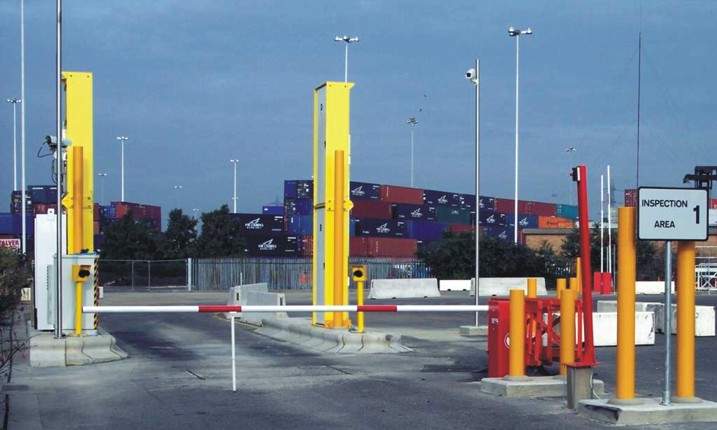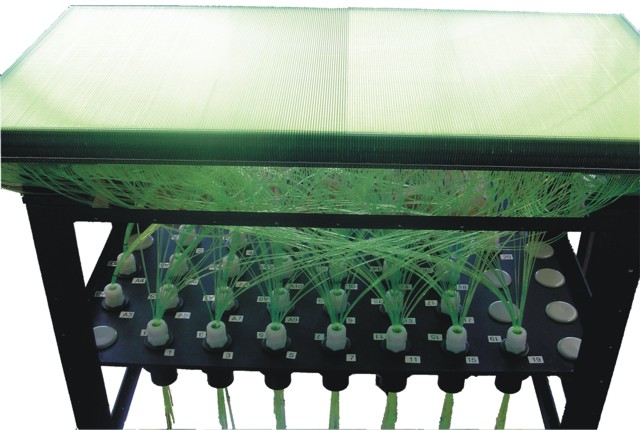For some, helium-3 supply picture is brightening
DOI: 10.1063/1.3591998
A year after complaining that the tap on their helium-3 supply had been shut off, US users of the gas for scientific applications say the flow has resumed. But researchers abroad continue to face prohibitively high prices for it, when they are able to find it. Although the shortage of 3He has spurred rapid advances in the development of alternatives for neutron detection, little progress has been made on adding new supplies.
The US inventory of 3He has stabilized since shipments from the US stockpile for use in radiation portal monitors were halted early in 2009 and an interagency task force took over control of distributions (see PHYSICS TODAY, June 2010, page 22
Consumption of 3He, however, is expected to run between 13 000 and 15 000 liters annually, which will result in a yearly deficit of about 5000 liters. The reserve currently holds between 35 000 and 40 000 liters, says Glaser.
Users have few options for new material. Tritium production is prohibitively expensive and wouldn’t help in the near term anyway, since appreciable quantities of 3He from decay wouldn’t become available for many years. One possibility is the extraction of 3He from tritium that has been separated from heavy water used in Canada’s CANDU reactors. The tritium is stored in beds at a facility near Toronto. Up to 20 000 liters of 3He could be extracted annually for three years, followed by 10 000 liters during each of the seven years after that, according to 2010 figures from the White House Office of Science and Technology Policy. A feasibility study on the shipment of the Canadian material for extraction at the SRS is scheduled for completion this spring. Other potential sources of 3He include certain natural gas fields and the national helium reserve, where minute fractions exist and could be separated using cryogenic distillation or gaseous diffusion. Studies of those options are to be completed by the end of this year, Glaser says.
Extremes in pricing
The current US price for 3He is set at $600 per liter for government use and in federally sponsored research and at $1000 per liter for commercial use. That compares with a range of $300 to $400 per liter that US customers were paying less than a year ago, a DOE official told a House committee last spring. Glaser says that price increases were required to offset the costs of the planned separation of the SRS material and to pay for the feasibility studies.
With few exceptions, however, US gas is available only to US users. Outside the US, the supply and pricing for 3He are nothing short of opaque. Russia, the only other major supplier of 3He, provides little information on its availability, complain users, and Russia’s agent, Chemgas, located in Boulogne, France, says only that it is currently negotiating with its supplier for more of the isotope.
Michael Cuthbert, business manager for the ultralow-temperature group at Oxford Instruments, says that the last quote he received from Chemgas in December was “significantly higher” than the market price; he added that the French distributor did not say how much gas could be offered. Helium-3 generally is available in Europe from Linde (formerly Spectra Gases), which will provide it at the prevailing market price to those users who don’t qualify for an allocation from the US reserve. The price, which recently has been about £1500 ($2400) per liter, hasn’t slowed sales of Oxford’s helium dilution refrigerators and 3He refrigerators so far, though Cuthbert worries that affordability is becoming a bigger issue as prices continue to rise. In March one Oxford customer had to pay £3000 per liter. The quantity of 3He contained in Oxford-made instruments varies, but one of its dilution refrigerator models requires about 15 liters. Its gas content represents somewhere between 10% and 25% of the total cost of the refrigerator, Cuthbert says.
US officials say they are in the dark about Russian sales. “We find out the Russians have made gas available when Linde tells us they have gas from Russia,” notes Glaser. Through various bilateral and multilateral forums, US officials have repeatedly urged their Russian counterparts to make 3He available to scientists, he says. The Russian response has been that they will provide the gas when they can.
Zuyu Zhao, vice president and principal scientist at Janis Research, says US buyers of the half-dozen cryogenic instruments Janis has shipped in the past year had no problems getting their gas, and they know up front the exact price they will be charged for it. That is a vast improvement from a year ago, he notes, when no one seemed to know what was going on and orders seemed to vanish into a “black box.” For customers outside the US, Janis has succeeded in obtaining small amounts of gas by buying back old instruments no longer in use and by recycling their 3He. Zhao says he has heard that China has plenty of gas lying around but lacks the technology needed to separate it.
Reducing 3 He demand
In terms of reducing demand, rapid progress has been made on alternatives to 3He for neutron detection, which is by far the biggest end use for the gas. For portal monitors, GE, in conjunction with SAIC, has begun manufacturing neutron tubes that are lined with boron-10 and can replace tubes filled with 3He in monitors currently in use at US ports. Portal monitors passively scan cargo for nuclear materials as tractor-trailers pass through. The DNDO’s Gregory Slovik says the 10B tubes are expected to pass the agency’s qualification process and become available for acquisition next year. “SAIC/GE is now a commercial product,” says Slovik. “You can haggle about the price, but there is a solution.”
Thomas Anderson, GE’s neutron-detector product line manager, says the challenge was getting the 10B tubes to fit inside the same envelope as the tubes they replaced, given boron’s smaller neutron-capture cross section. The solution was to maximize the surface area that was coated with 10B inside the tubes. GE is now assessing whether it can scale down its technology for use in other security applications, such as the international safeguarding of nuclear fuel and the handheld neutron detectors used for secondary, detailed inspection of cargo.
Slovik says other technologies for portal monitors and other radiation-detection applications are being researched by the DNDO, DOE, the Department of Defense, and NIST. Those include small boron-lined tubes known as straws, which could be useful for backpack-sized neutron detectors, and multiple scintillator approaches, such as lithium fluoride glass and zinc sulfide wavelength-shifting fibers. Other possible options are three-dimensional semiconductors, a fast neutron detector, and microchannel plates. “You never know where the next innovation will come from,” Slovik says.
Advances have also come on substitutes for 3He used for detectors at neutron science facilities. Before the shortage materialized, the world’s neutron scattering facilities had identified collective requirements for 115 000 liters through 2015 alone. Realizing they will never find anything like those quantities in that time frame, the community has formed three international research teams to find alternatives for large-area detectors. Bruno Guerard, a scientist at France’s Institut Laue–Langevin (ILL), heads one effort that focuses on 10B films. Other labs are working on solid scintillators and boron trifluoride gas tubes.
Guerard notes that one large detector completed three years ago at ILL would require 3000 liters of 3He. At the time, the gas could be had for $80 per liter. But at current prices the detector could not be duplicated. Since the 3He shortage began, Russian supplies have been expensive and prone to last-minute price changes, he says. Nucsafe, a US manufacturer of neutron detectors, recently offered to sell ILL a number of 3He tubes containing a total of 817 liters of the gas, at a price of $2400/liter. The ILL declined, saying the price was too high. Nucsafe CEO Rick Seymour said in an e-mail message that he offered the material well below the price quote he recently received from an unnamed neutron-tube manufacturer of $3000 per liter, plus $1000 for the tube. A US firm that he declined to identify ultimately bought the tubes for below Nucsafe’s asking price, Seymour said.
Indiana startup finds a solution
Guerard says scintillator technologies are the alternative that is the most mature for large-area detectors. Yacouba Diawara, who directs the neutron detection R&D effort at the Spallation Neutron Source (SNS), says that a detector using a zinc sulfide scintillator to produce light that is picked up by wavelength-shifting fiber is far along the development path. It is being manufactured by PartTec, an Indiana University startup company that has licensed technology from Oak Ridge National Laboratory, where the SNS is located. Diawara says the PartTec instruments are performing nearly as well as 3He versions, and he expects that comparability will be attained within one year. A total of 30 of the units have been installed in two large SNS detectors, and PartTec has an exclusive worldwide license from Oak Ridge to commercialize those instruments. Company president Herschel Workman says a commodity classification has been issued by the Department of Commerce that permits export of the detectors to most countries without the need for export licenses.
Diawara and Guerard agree that large-area detectors are the priority for 3He alternatives, since they are used for the vast majority of neutron-scattering experiments and require the bulk of the gas. For fine-resolution neutron imaging, however, PartTec’s detectors will not work, Workman admits. But such experiments account for only a small percentage of neutron scattering, and high-resolution detectors need just 100 or so liters of 3He, compared with thousands in large-area detectors. Guerard says that once the large-detector replacement efforts are completed, ILL will pursue alternatives for the high-resolution detectors, such as lithium fluoride glass coupled directly to photomultipliers, and 10B thin films.
But even as the need for 3He is being reduced or eliminated in some applications, other uses could see growth. The current material of choice for some solid-state quantum computing research is aluminum, says Lawrence Livermore National Laboratory scientist Darin Kinion. With a superconducting transition temperature of 1 K, aluminum must be chilled using 3He cryogenics, but Kinion’s quantum computing research was held up for months last year when he couldn’t obtain 20 liters of gas for a newly purchased helium dilution refrigerator. Kinion, whose sponsor is the Intelligence Advanced Research Projects Agency, had to be loaned the gas by Janis before finally receiving his allocation of 3He from the government. Kinion describes a “weird dichotomy” among the different users of 3He. “My 20 liters will last me basically my entire career. We are trained to check these things for leaks; we’re practically counting the atoms,” he says. “Then you have other users who need hundreds and hundreds of liters and huge vessels. They probably bleed off my 20 liters.”

Using tubes lined with boron-10, GE and SAIC have developed a plug-in replacement for the helium-3 neutron detectors in radiation portal monitors, used to scan cargo entering the US for the presence of nuclear materials. Portal monitors, which use large amounts of 3He, were blamed for creating a worldwide shortage of the gas.
GE


A partially assembled neutron detector built by PartTec, an Indiana University startup, for instrumentation at scientific neutron-scattering facilities. Designed to replace large-area neutron detectors that use large amounts of helium-3, the PartTec design couples zinc sulfide scintillators with wavelength-shifting fibers to detect neutrons.
PartTec

More about the Authors
David Kramer. dkramer@aip.org




